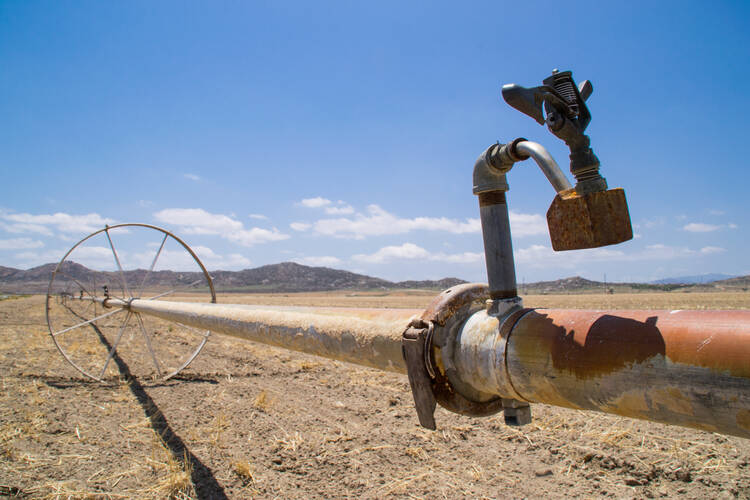If you have been paying any attention to California news lately, you’ve heard about the state’s devastating three-year drought: counties worth of farms decimated, whole towns without water and government officials proposing emergency legislation. This year has been thus far the driest year California has known since it began keeping track 163 years ago. Eighty-two percent of the state faces extreme or exceptional drought conditions. To look at satellite photos is to see the lush greens of 2002 turned a burnt outback red.
But while it is clear that California is in crisis, the solutions are not always the tales most told. Take the situation of farmers. Since Edward Mulholland in the 1910s first bought water-rich land some 250 miles to the northeast of Los Angeles to ensure the city would always have water, California’s farmers have told and retold the story of politicians destroying their livelihoods.
Some of those claims have a basis in fact. In the decades after the purchase of the Owens Valley property, much of that fertile farmland dried up. The remains of the Owens Lake is today one of the greatest sources of particulates (a k a dust) in the United States. At a time when other towns in the region lack drinking water, the state has had to dump into the lakebed each year the equivalent of water for 400,000 households simply to ensure a livable air quality.
Yet today some farmers are also exacerbating the state’s problems. California produces more food than any other state in the nation. It is the country’s leading producer of avocados, broccoli, carrots, cauliflower, grapes, onions, peppers, spinach and walnuts, among other things. But faced in recent years with fierce competition from other countries, some California farmers have turned away from annual yield crops toward higher profit nut trees that require far more water. Today, a staggering 10 percent of the state’s total water usage goes just to grow almonds.
In other places, farmers have stopped growing crops altogether and instead sell their groundwater to their peers at 10 times the normal price. “Groundwater mining” is an estimated $60 billion industry, and it is for the moment completely unregulated. A single farm can legally diminish the flow of a river that runs through other properties.
Similarly, while improving urban conservation seems key to the state’s future, in point of fact Los Angeles today uses less water per capita than almost any other American city of over one million. And Los Angeles and San Francisco are among the lowest per capita water users in the state.
The state’s most pressing issue is instead the shocking fragility of a major water source. The California State Water Project, which collects water in Northern California and directs it throughout the state via the Sacramento-San Joaquin River Delta, provides potable water for 25 million people. It is the largest project of its kind in the entire world.
Much of it consists of canals built on fault lines. The system’s water is held back by peat levees constructed in the 1850s. Come a major earthquake—which many seismologists believe is inevitable—much or all of this system could very well collapse. This would render the entire supply inaccessible for as much as three years and probably draw salt water from San Francisco Bay into the system.
Even today, with the levees mostly intact, the system is able to provide at best 60 percent of the water it promises. (This year it delivered to Southern California only 5 percent of what was expected.) Bob Muir, spokesperson for the Metropolitan Water District consortium, which helps provide water to 19 million people in southern California, says, “The Delta is the West Coast version of the Chesapeake Bay or Florida Everglades; it’s in a state of environmental collapse.”
Governor Jerry Brown’s administration is currently working on a $25 billion bill to fix the system by rerouting water around and under the delta. The plan has been debated for almost 10 years. Even if it is passed soon, it won’t be completed until 2026.
Sean Dempsey, S.J., who is completing a doctorate in urban history at the University of Pennsylvania, notes that Los Angeles was built on the premise that human ingenuity could master any obstacle to create a land that was “mythologically exceptional, the realization of the American dream.”
Today, in California that human ingenuity is taxed more than ever. But our greatest obstacle may very well be ourselves.








